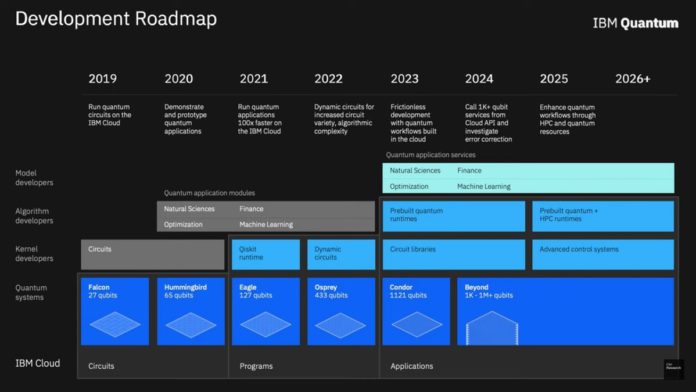“It took us 60 years from the first logic gates to modern cloud services. But IBM has set itself on a mission to fast forward the same journey for Quantum Computation (QC) to 3 years,” Jay Gambetta, IBM Fellow and Vice President, IBM Quantum.
Quantum Computing has opened up new doors to solve existing impenetrable problems and turn them into opportunities. But realizing the promised quantum power is still “The Road not taken.” To get the computations right, one needs exactly three things — the hardware stack, the software stack, and the developer environment. IBM has been a front-runner in the quantum race by settings above three things as early as 2010. And for each component, they had released a roadmap that is a brave move, considering that corporations usually post achievements rather than work plans. The company is bold enough to take chances and announced its ultimate goal openly — “to design a full-stack quantum computer deployed via the cloud that anyone around the world can program.”
IBM Quantum Hardware Roadmap
IBM wants to build scalable, larger, and better quantum computers, and the first objective, for now, is to create a 1000+ qubit system named Condor. But the researchers have to find out the solutions to preserve the states in the qubits for a more extended period while reducing noise-induced errors to make quantum computation viable. They have been busy optimizing the compilers, continuously refining 2-qubit gates, and many more to release the next candidate, ‘Eagle,’ surpassing 100+ qubit count and concurrently processing classical computations.
Also Read: IBM And Daimler Simulates Materials With Fewer Qubits
IBM Quantum Software Roadmap
The Circuit API is still in use for sending quantum instructions to quantum computers, which can handle smaller qubit systems. But to scale things up, more powerful circuits are needed that bring iterative phase estimation closer to the qubit systems than on the users’ system and cloud.
IBM will soon release the new Qiskit runtime to boost the performance of the hybrid cloud technology 100 times. The Dynamic Circuits are also a force-multiplier that allows branching within the circuit based on measurements. These dynamic circuits can manipulate the future states based on the intermittent measurement and produce mid-circuit resets. This ability provides support for larger algorithmic complexities and circuit variety. As the software matures, some circuits will be used more frequently than the rest, so the goal is to offer a library of pre-built and optimized circuits for end-users.
IBM Quantum Developer Environment Roadmap
IBM has shown that developers need not learn new tools or languages but instead use their existing code to interact with a quantum computer. All they need is a few lines of code to call a quantum API service on the cloud. The company is hopeful that the developers will be able to lay the foundation for the software stack that runs on the cloud accessible by anyone worldwide. In the long run, the developers and researchers from other fields shall seamlessly integrate quantum computing into their workflow.
Apart from the corporate cut-throating for profits from quantum services, the good thing that has happened is IBM’s support for the open-source developers and researchers building the quantum applications. The company is also busy outreaching to future generations by conducting wholesome courses, giving free credits to the quantum cloud, and providing ready-to-start developing materials like its Qiskit Handbook.


